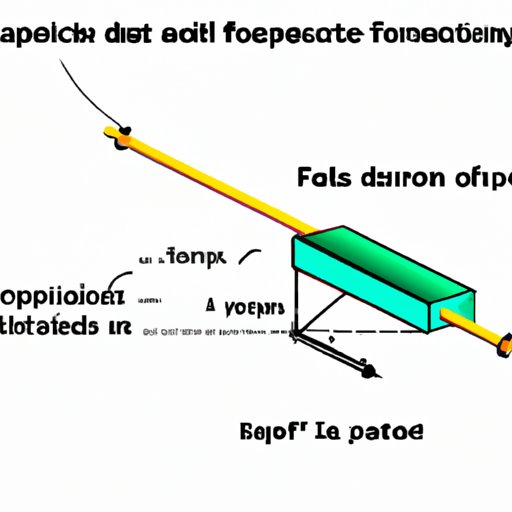Introduction
Projectile motion is a branch of physics that deals with the motion of objects that are launched into the air. It describes the behavior of objects such as baseballs, arrows, and rockets that are projected into the air and then follow a curved path before landing on the ground. In this article, we will explore how to solve projectile motion problems and provide a real-world example of a problem and its solution.
Step-by-Step Guide to Solving Projectile Motion Problems
The first step to solving any projectile motion problem is to understand the physics behind it. According to Newton’s laws of motion, an object in motion will remain in motion until acted upon by an external force. This means that a projectile will continue to move at a constant velocity until it reaches the apex of its trajectory, when gravity takes over and begins to pull it back down towards the ground. To calculate the velocity, acceleration, and displacement of the object, we must use a set of equations and formulas.
The equation for calculating the acceleration due to gravity is: a = g, where g is the gravitational acceleration (9.8 m/s2). The equation for calculating the velocity of the object is: v = u + at, where u is the initial velocity, a is the acceleration, and t is the time. The equation for calculating the displacement of the object is: x = ut + 1/2at2, where x is the displacement. These equations can be used to solve any projectile motion problem.
In addition to the equations, it is also possible to solve projectile motion problems using graphical methods. Graphical methods involve plotting the position of the object over time on a graph and then using the graph to calculate the velocity, acceleration, and displacement of the object. This method can be helpful in visualizing the motion of the object and understanding how its position changes over time.
Real-World Example of a Projectile Motion Problem and its Solution
To illustrate how to solve a projectile motion problem, let’s look at a real-world example. Let’s say we want to calculate the velocity, acceleration, and displacement of a baseball that is thrown off a cliff at an angle of 45° with an initial velocity of 10 m/s. To solve this problem, we can use the equations and graphical methods outlined above.
First, we need to calculate the acceleration due to gravity. Using the equation a = g, we get an acceleration of 9.8 m/s2. Next, we need to calculate the velocity of the baseball. Using the equation v = u + at, we get a velocity of 19.6 m/s. Finally, we need to calculate the displacement of the baseball. Using the equation x = ut + 1/2at2, we get a displacement of 98 m.
We can also use graphical methods to solve the problem. We can plot the position of the baseball over time on a graph and then use the graph to calculate the velocity, acceleration, and displacement of the object. By looking at the graph, we can see that the velocity of the baseball is 19.6 m/s, the acceleration is 9.8 m/s2, and the displacement is 98 m.
Different Types of Projectile Motion Problems and their Solutions
Projectile motion problems come in many forms and can vary in difficulty. Some problems may involve multiple objects, while others may require more complex calculations. However, the basic principles of projectile motion remain the same regardless of the complexity of the problem. The equations and graphical methods outlined above can be used to solve any type of projectile motion problem.
One type of projectile motion problem involves two objects moving in opposite directions. In this type of problem, the equations and graphical methods outlined above can be used to calculate the velocity, acceleration, and displacement of both objects. Another type of problem involves calculating the trajectory of a rocket or other projectile. In this type of problem, the equations and graphical methods outlined above can be used to calculate the velocity, acceleration, and displacement of the rocket at various points along its trajectory.
Conclusion
In this article, we have explored how to solve projectile motion problems. We have discussed the physics behind projectile motion, outlined the equations and formulas necessary to solve problems, and demonstrated how to use graphical methods to solve problems. We have also provided a real-world example of a problem and its solution, as well as an overview of different types of projectile motion problems and their solutions. By following the steps outlined in this article, you should be able to solve any projectile motion problem with ease.
(Note: Is this article not meeting your expectations? Do you have knowledge or insights to share? Unlock new opportunities and expand your reach by joining our authors team. Click Registration to join us and share your expertise with our readers.)
